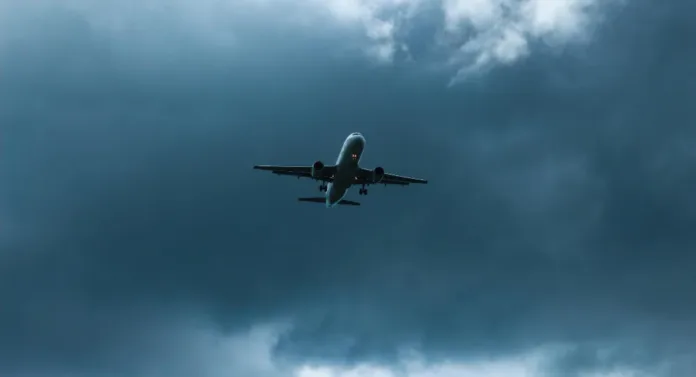Turbulence is no longer just a nuisance—it’s turning flights into warzones, and it’s getting worse
When Andrew Davies boarded his flight from London to Singapore, he didn’t expect to live through what he later described as “a rollercoaster from hell.” Midway through the journey, the aircraft was suddenly jolted by extreme turbulence, plunging a horrifying 178 feet in under five seconds. Trays launched, electronics flew, scalding drinks splashed passengers—one man’s heart gave out. Geoff Kitchen, 73, died of a heart attack.
It was chaos in the cabin. “I got hit in the head with my iPad,” Davies said. “Coffee everywhere. People were crying. No one knew what had just happened.”
And the worst part? This isn’t a one-off. It’s only the beginning.
The Unseen Killer in the Sky
Severe turbulence has long been a feared but rare phenomenon in aviation. Yet experts now warn the skies are changing. In just the past decade, incidents of violent turbulence have increased alarmingly. The culprit: climate change.
According to Professor Paul Williams, a leading atmospheric scientist at the University of Reading, we’re now entering an era of skyquakes. “We’re looking at a doubling or tripling of severe turbulence in coming decades,” he warns.
This means what used to be a 10-minute bout of bumps could soon become 30 minutes of violent shaking—potentially life-threatening without warning.
Invisible and Inescapable
Unlike storm clouds or mountains, clear-air turbulence is invisible. It forms without warning, driven by rising temperatures and rapidly shifting jet streams. Pilots can’t see it, radar doesn’t always detect it, and passengers have zero notice before being thrown skyward—sometimes breaking bones or slamming into ceilings.
In 2023 alone, nearly 40% of all serious passenger injuries were caused by turbulence. In the US, over 200 people have been hospitalised since 2009 due to in-flight turbulence, most of them crew members caught off guard mid-service.
Embed from Getty ImagesJetstreams on Steroids
Climate change is pushing warmer air into the upper atmosphere, supercharging the jet stream—the river of wind that planes ride. As this wind tunnel tightens and speeds up, turbulence zones become more chaotic and violent.
The North Atlantic corridor—home to thousands of flights between the UK and North America—has seen a 55% increase in severe turbulence in the last 40 years. Other hotspots include East Asia, the Middle East, and the North Pacific.
Airlines on Alert
Airlines are quietly scrambling. Radar forecasting has improved, and pilots now plan routes with turbulence zones in mind. But even with these systems, forecasts still miss nearly 25% of clear-air events.
New strategies include keeping passengers buckled longer—Southwest Airlines now ends cabin service at 18,000 feet to keep crews safe. Korean Air even stopped serving hot noodles in economy after turbulence incidents doubled.
Some airlines are also turning to futuristic tech. An Austrian start-up, Turbulence Solutions, is testing turbulence-cancelling wings using real-time sensors. Others are mimicking barn owls—yes, owls—to engineer stabilising wing designs.
The Economic Fallout
The hidden cost? Massive. Aircraft repairs, passenger compensation, diversions, fuel waste, and delays are draining airline finances—some estimates say up to £1.5 million per carrier, per year.
And let’s not forget the climate irony: turbulence-avoiding detours added over one million kilometres of extra flying distance in Europe in 2019 alone, pumping 19,000 extra tonnes of CO₂ into the atmosphere.
Fasten Your Seatbelt—For the Next Decade
Even with all the science and safety in place, passengers remain nervous. “The second I sit down, my seatbelt’s on tight,” Davies admits. “If I stand up, it’s only for seconds. I’ve learned the hard way.”
The skies are turning unstable. Your seatbelt may soon become your best defence against an invisible force that’s only getting stronger.
